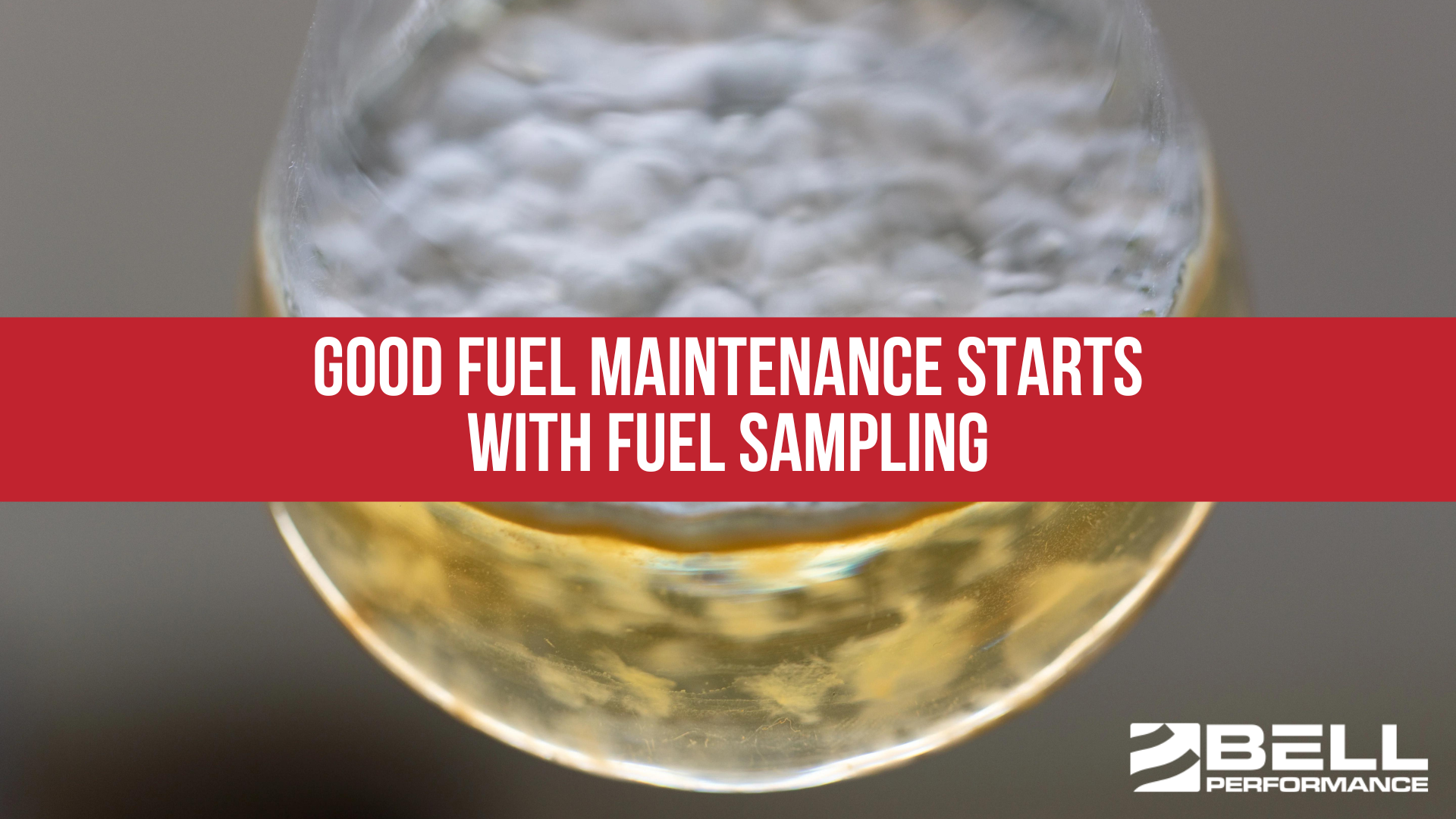The Importance of Your Fuel Sampling Procedure
In its report released in 2016, the EPA reminded us that there are over 100,000 diesel fuel storage tanks across the country. That’s a lot of tanks...

Fuel storage and maintenance is always a topic of high importance, especially for industries relying heavily on fuel-based operations. A recent episode of the "Fuel Pulse Show Podcast," hosted by Erik Bjornstad, delved deep into the complexities of sampling stored fuel.. We'll try to summarize the key points discussed in the episode here.
![]() "Fuel sampling" is more than just taking a random portion of fuel from your tank. The purpose of fuel sampling is to allow you to verify the condition of the fuel in your system, with a view towards ensuring that the fuel remains in optimum condition, free from contaminants like water, sediment, and microbial growth.
"Fuel sampling" is more than just taking a random portion of fuel from your tank. The purpose of fuel sampling is to allow you to verify the condition of the fuel in your system, with a view towards ensuring that the fuel remains in optimum condition, free from contaminants like water, sediment, and microbial growth.
That being said, not all sampling is equally useful. The location of sampling plays a crucial role in determining the quality of the fuel. Where you sample from, matters.
Host Erik Bjornstad highlights that regularly checking the condition of stored fuel is essential. By taking samples, you can evaluate the fuel's state, which helps make informed decisions. Without doing this, it's a lot easier to overlook potential issues like sediment build-up or microbial contamination. Without doing this, it becomes a lot easier to miss changes in your stored fuel that otherwise would hint at something going wrong. In other words, missing the stuff that becomes a problem when it's out of sight, out of mind.
Where you sample in a given tank can play a big part in determining how much "diagnostic value" your sample is. A fancy way of saying whether your sample will tell you what you need to know or not.
1. Top of the Tank: Sampling from the top gives a picture of the cleanest fuel. This fuel is usually free from sediment, water, and microbes, making it ideal for tests not influenced by these contaminants. However, it may not be representative of the overall fuel condition in the tank.
2. Middle of the Tank: Fuel from the middle is similar in quality to the top. It's mostly clean and might not offer much information regarding contaminants. If you’re looking for a comprehensive view of your fuel's health, this might not be the best place.
3. Bottom Middle (18 inches from the bottom): This location is typically referred to as the bottom middle. It is a recommended spot to capture an overall picture of the fuel quality. Bjornstad suggests this area for water and sediment tests, stability testing, and combustion tests.
4. Three Inches from the Bottom: This is the hotspot for microbial activity. Microbes thrive at the interface between fuel and water. Sampling here is ideal for detecting microbial contamination but might provide skewed results for water and sediment content due to its proximity to the tank's base.
Using a fuel sampler or a "bacon bomb" is the most effective way to get samples from different tank depths. This tool allows you to collect liquid samples from specified tank depths, ensuring accuracy.
Here are some tips shared in the podcast:
Sample From The Right Depth: As inferred above, the right depth really depends on what you're needing to fiind out. One thing ASTM also recommends is that if you're aiming to do something like assess the kind of properties of the fuel that aren't skewed by contaminants, you can take samples from multiple heights in the tank, test each, and average them together.
Always Clean the Sampler: If you're sampling multiple depths, start from the top and work your way down. Clean the sampler between samples to avoid cross-contamination.
Follow Proper Protocols: Using clean sample containers and immediately sealing them post-sampling can ensure sample integrity. For microbial tests, refrigerate samples to slow down microbial changes and test them as soon as possible.
Understand Your Testing Goal: This is something we were getting at above. Different tests require samples from different locations. For instance, if checking for microbial growth, a sample close to the bottom is best. However, for general fuel health, a sample from between 6 and 18 inches would be satisfactory.
Knowing where and how to sample your stored fuel can make a massive difference in the quality and reliability of your fuel. Remember, the goal is to ensure the longevity and performance of your stored fuel, and effective sampling is a step in the right direction.
Don't forget to tune into the "Fuel Pulse Show Podcast" for more insights on fuel maintenance and other related topics. Your stored fuel's health and efficiency are worth the attention!
In its report released in 2016, the EPA reminded us that there are over 100,000 diesel fuel storage tanks across the country. That’s a lot of tanks...

Imagine a scenario where a hospital faces a power outage but finds its backup generators faltering due to poor fuel quality. Such a situation...
When it comes to the dual goals of maintaining fuel quality and preventing costly equipment failures that might be fuel-related, proper fuel sampling...